Kamotou Hamono
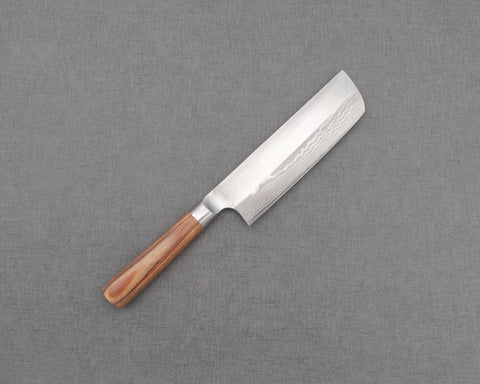
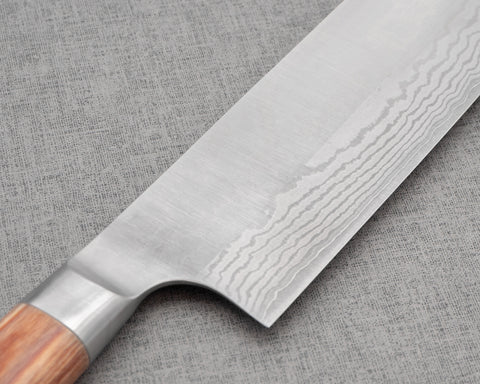
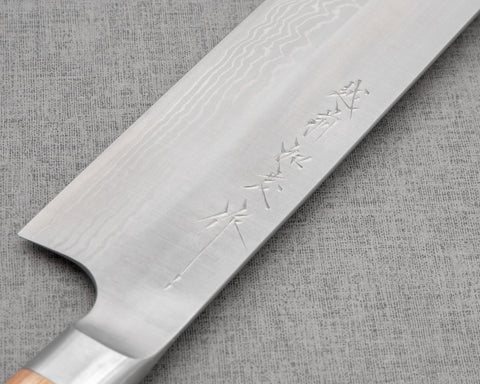
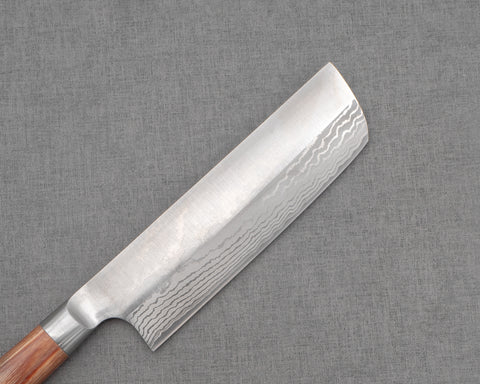
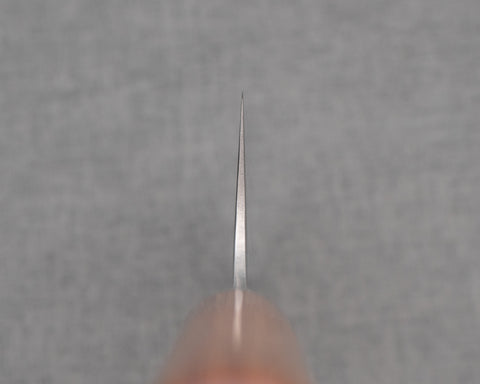
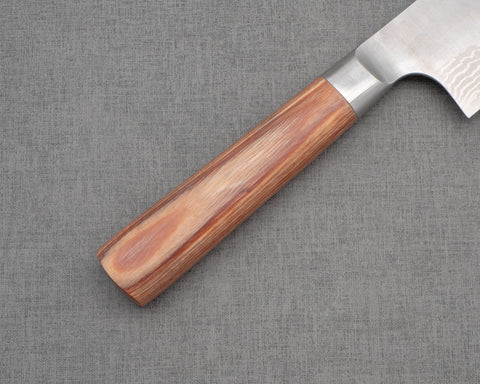
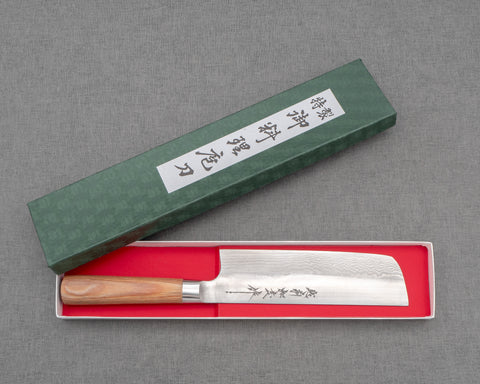
Shiro Kamo VG10 Damascus 160mm Nakiri
目前沒有提供取貨服務
This Nakiri from Shiro Kamo is one of the best value options in terms of cutting performance and appearance among other knives within the same price range. The knife is forged beautifully with Damascus and Kasumi (hazy line) finishing in VG10 steel. The back of the blade features a rare hand-chiselled engraving.
Spec:
- Origin (Made in): Echizen, Fukui Prefecture, Japan
- Craftsman: Mr. Shiro Kamo
- Brand: Kamotou Hamono
- Knife Type: Nakiri
- Blade
- Construction: San Mai
- Grind: Double-edged Blade (50/50 Grind)
- Hagane (Core Steel): VG10
- Jigane (Cladding): Stainless Steel
- Hardness: 61 HRC
- Hand-forged, hand-ground, hand-sharpened
- Blade Finishes:
- Damascus
- Kasumi Polish
- Blade Length: 160mm (6.3")
- Blade Height (at heel): 47mm
- Spine Thickness
- Above heel: 1.9mm
- Middle: 1.7mm
- Handle
- Shape: Oval
- Material: Plywood
- Kuchiwa: Black Buffalo Horn
- Length: 119mm
- Overall Length: 302mm
- Weight: 172g (6.06oz)
- Hand Chiselled mark: In Japanese Kanji "Echizen Kamo Made" (越前 加茂 作)
About Kamotou Hamono 加茂藤刃物
Master Shiro Kamo is the third generation blacksmith of Kamotou Hamono, a small artisan knife workshop based in Takefu City, Fukui Prefecture, Japan. He started helping his father in the workshop when he was a small kid and started making knives at the age of 25. He was certified as a traditional craftsman at the age of 45. And for decades, Mr. Kamo perfected forging techniques that make knives easier to sharpen while maintaining superior edge retention capabilities. Now in his 60s, he works on preserving and passing down the traditional crafting methods to his disciples (the youngest being 19 years old) at Kamotou Hamono.
Care:
Aogami Super (Blue Super) steel is considered the most superior Japanese high carbon steel for knife making. Despite some corrosion resistant quality (for a carbon steel), it is not stainless, therefore you should wipe your knife dry after each use. Patina will develop over time. Rust may develop if left in prolonged contact with water or acidic food. Use a rust eraser to clean if rusts develop. Avoid cutting into bones, frozen foods, hard fruit pits.
Cutting Surface:
Recommended cutting surface: wood, rubberized boards and high-end composites, and quality plastics such as polyethene make acceptable cutting surfaces, and will help protect and prolong knife’s edge. AVOID glass, metal, countertops, and other rigid, non-forgiving surfaces.
Sharpening:
We recommend sharpening all quality Japanese knives on whetstones, as we believe they yield the best results for your knives.
